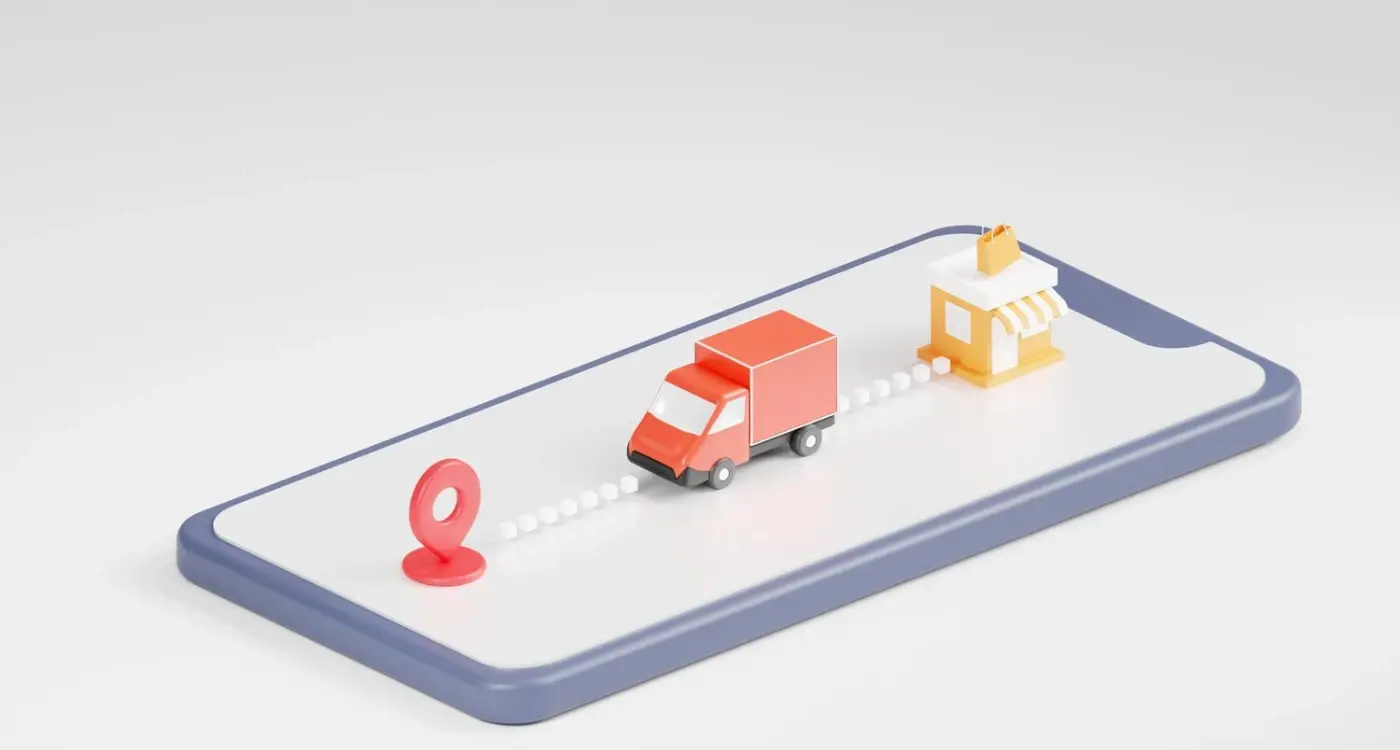What's The Difference Between Consumer And Enterprise App Development?
Every day, millions of people download apps designed for completely different purposes. Some apps help you order coffee, play games, or chat with friends—whilst others manage entire company operations, handle sensitive financial data, or coordinate teams across continents. The gap between these two app types is massive, and understanding it can save businesses thousands of pounds and months of development time.
When we start working with new clients, one of the biggest surprises is how many assume all apps are built the same way. They're not. A business app serving 50,000 employees has completely different requirements than a consumer app trying to entertain users during their commute. The development comparison between these app types reveals fundamental differences in approach, complexity, and priorities that affect everything from initial planning to final deployment.
The wrong approach to app development isn't just expensive—it can be catastrophic for your business goals
This guide will walk you through the key differences between consumer and enterprise app development, helping you understand which approach fits your needs. We'll explore user experience considerations, technical requirements, security implications, and budget realities so you can make informed decisions about your next mobile project.
Understanding Consumer Apps
Consumer apps are the ones you probably use every day without even thinking about it—Instagram, Spotify, your banking app, that game you're secretly addicted to. These apps are built for regular people like you and me, not for businesses or employees at work. They live on our phones, tablets, and sometimes our computers, making our lives easier, more entertaining, or more connected.
What makes consumer apps special is that they need to be incredibly simple to use. Nobody wants to read a manual to figure out how to order a pizza or check their bank balance! The best consumer apps are so intuitive that your gran could pick them up and use them straight away. They're designed with mass appeal in mind—millions of people might download them, so they need to work for everyone.
The Numbers Game
Consumer apps play a completely different game when it comes to success. We're talking about potentially millions of downloads, thousands of daily users, and the constant pressure to keep people engaged. Unlike business apps where you might have a captive audience of employees who have to use your software, consumer apps are competing for attention in a crowded marketplace where people can delete you with a single tap.
This means consumer apps need to be fast, beautiful, and addictive in the best possible way. They need to solve real problems or provide genuine entertainment value—otherwise, why would anyone bother keeping them on their phone?
Understanding Enterprise Apps
Enterprise apps are built for businesses, not everyday consumers. Think of them as the digital tools that help companies run their operations—from managing staff schedules to tracking inventory or processing customer orders. Unlike the apps you download from the App Store for fun, these are serious business applications designed to solve specific workplace problems.
The biggest difference? Enterprise apps don't need to be pretty or trendy. They need to work reliably, handle lots of data, and integrate with existing business systems. I've built apps that look quite plain but save companies thousands of pounds each month by automating tedious tasks.
Key Features of Enterprise Apps
- Integration with existing business software and databases
- Advanced user permissions and role-based access
- Robust data analytics and reporting capabilities
- Multi-platform compatibility across devices
- Scalability to handle growing business needs
Enterprise apps typically serve multiple user types within an organisation. A warehouse management app might have different interfaces for floor workers, supervisors, and executives—each seeing only the information they need for their role.
Enterprise apps focus on productivity and efficiency rather than user engagement. Success is measured by how much time and money they save the business, not how many downloads they get.
Security is absolutely paramount in enterprise app development. These applications often handle sensitive company data, financial information, and customer details that must be protected at all costs.
Key Differences in User Experience
The way people interact with consumer apps versus enterprise apps is like night and day—and for good reason! I've watched teams struggle with this fundamental difference more times than I can count. Consumer apps need to be instantly intuitive; users won't spend five minutes figuring out how to post a photo or order their morning coffee. They'll delete your app and move on to the next one.
Design Priorities That Matter
Enterprise apps work differently. The people using them are getting paid to learn the system, which means you can include more complex features and workflows. A warehouse manager will spend time learning inventory software if it helps them do their job better. But that same person won't tolerate a confusing shopping app on their phone.
Consumer apps focus on delight and engagement—smooth animations, beautiful visuals, and that satisfying feeling when you complete an action. Enterprise apps prioritise efficiency and data accuracy. Nobody cares if the expense reporting app has fancy transitions; they just want to submit their receipts quickly and get back to work.
Testing and Feedback Loops
The feedback cycle is completely different too. Consumer apps get reviewed by millions of strangers who'll rate you one star for the smallest annoyance. Enterprise apps get evaluated by a smaller group of professionals who understand the business context and can provide more detailed, constructive feedback about functionality rather than just appearance.
Development Complexity and Technical Requirements
When I'm explaining development complexity to clients, I often see their eyes glaze over—but here's the thing, understanding these differences will save you both time and money. Consumer apps are typically straightforward; they need to be fast, look good, and work well on different phones. Think of your favourite social media app—it's complex behind the scenes but the development requirements are relatively standard.
Enterprise apps? That's where things get interesting. These business app projects require integration with existing company systems, databases that have been around since before smartphones existed, and custom workflows that match how each company operates. We're talking about apps that need to connect to payroll systems, customer databases, and inventory management—sometimes all at once.
Integration Challenges
The biggest headache in enterprise development is making everything talk to each other. Consumer apps can live in their own bubble, but business apps need to play nicely with legacy systems that weren't designed for mobile integration.
Every enterprise client tells us their systems are 'simple' until we start the technical discovery—then we uncover decades of customisations and workarounds that make each project unique
This development comparison shows why enterprise projects take longer and cost more. Consumer apps follow established patterns; enterprise apps need custom solutions for each client's specific technical environment.
Security and Compliance Considerations
When I'm building apps for different clients, one of the biggest differences I notice is how seriously they take security. Consumer apps and enterprise apps live in completely different worlds when it comes to this stuff—and trust me, the gap is massive.
Consumer apps tend to focus on basic security measures like password protection and maybe two-factor authentication. They're protecting personal photos, social media posts, or shopping preferences. Don't get me wrong, that's still important, but the stakes are relatively low compared to what enterprise apps deal with.
Enterprise Security Requirements
Enterprise apps are handling sensitive business data, financial records, employee information, and trade secrets. We're talking about multi-layered security protocols, encryption standards, and compliance with regulations like GDPR, HIPAA, or SOX depending on the industry.
- Multi-factor authentication systems
- Role-based access controls
- Data encryption at rest and in transit
- Regular security audits and penetration testing
- Compliance reporting and documentation
The Real-World Impact
Here's what this means for development: enterprise apps take longer to build and cost more money. You can't just slap together a consumer app and call it enterprise-ready. The security requirements alone can add months to your timeline and require specialised developers who understand compliance frameworks. But when you're protecting millions of pounds worth of business data, cutting corners isn't an option.
Cost and Timeline Variations
When it comes to budgeting for your next project, there's a massive difference between consumer and enterprise app development—and I mean massive! Consumer apps might seem cheaper on the surface, but don't let that fool you. While a basic business app for internal use could cost anywhere from £15,000 to £50,000, consumer apps targeting millions of users often require much more investment in marketing, user acquisition, and continuous updates to stay competitive.
Enterprise apps take longer to build but have more predictable timelines. You're looking at 4-8 months for most business applications, with clear milestones and fewer surprises along the way. Consumer apps? They can be built faster initially—sometimes in 2-4 months—but here's the catch: they never really finish. You'll be updating, tweaking, and adding features constantly based on user feedback and market demands.
Budget for at least 30% more time and money than your initial estimates, regardless of app type. Things always take longer than expected!
Timeline Breakdown Comparison
| Development Phase | Consumer App | Enterprise App |
|---|---|---|
| Planning & Research | 2-4 weeks | 4-8 weeks |
| Design & Prototyping | 3-6 weeks | 6-10 weeks |
| Development | 8-12 weeks | 12-20 weeks |
| Testing & Deployment | 2-4 weeks | 4-8 weeks |
The ongoing costs are where things get interesting. Enterprise apps typically have lower maintenance costs once they're live, but consumer apps require constant investment in updates, server capacity, and user support to stay relevant in competitive app stores.
Conclusion
After eight years of building apps for both consumers and enterprises, I can tell you that choosing between consumer and enterprise development isn't just about picking a different set of features—it's about understanding two completely different worlds. Consumer apps need to be intuitive, visually appealing, and solve problems quickly; enterprise apps need to be secure, scalable, and integrate seamlessly with existing business systems.
The development approach changes everything too. Consumer apps can often be built faster with more creative freedom, but enterprise apps require careful planning, extensive testing, and ongoing support that can stretch timelines significantly. Security requirements alone can add months to enterprise projects, whilst consumer apps might get away with basic protection measures.
Budget planning works differently for each type as well. Consumer apps might seem cheaper upfront, but marketing costs can be enormous. Enterprise apps cost more to build but often have guaranteed users and longer lifespans. The return on investment calculations are completely different.
Whether you're building for consumers or enterprises, success comes down to understanding your users' real needs and building something that genuinely makes their lives easier. The technical details matter, but they're just the foundation for creating something people actually want to use.
Share this
Subscribe To Our Learning Centre
You May Also Like
These Related Guides

What's Different In Building a Restaurant App and a Food Delivery App?

What Does an App Development Roadmap Look Like?



